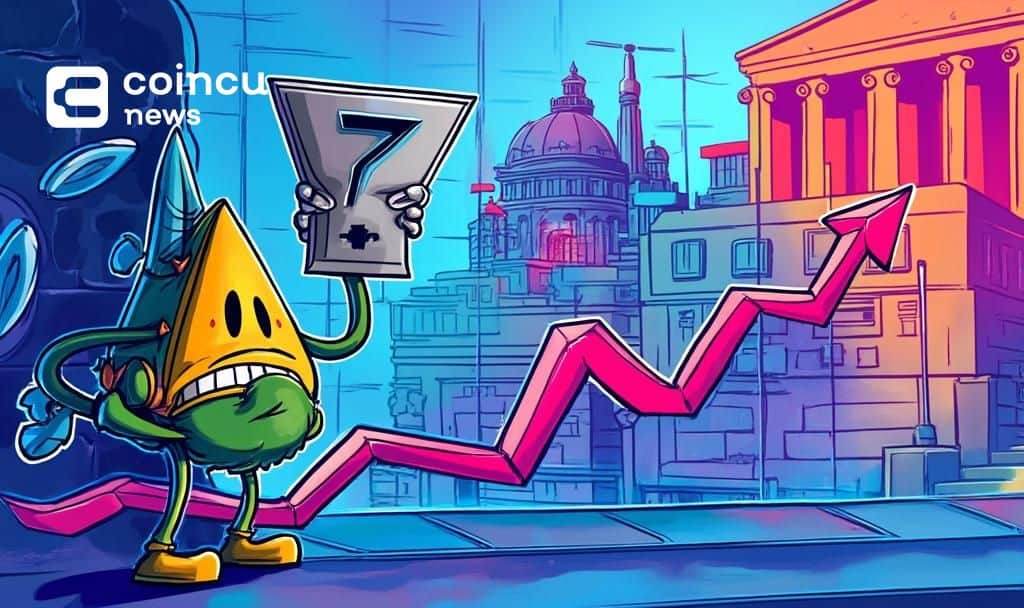Helium update: HNT Live price, price chart, news and markets






Helium Price Chart Update [HNT]
Helium Price Update Today
About Helium
Helium is an emerging cryptocurrency that sits at the 49th spot in terms of market capitalization, valued at around $2 billion. Launched in July 2019, it operates as a distributed network of long-range wifi hotspots.
Introducing Helium ($HNT)Helium serves as a decentralized blockchain-powered network designed specifically for Internet of Things (IoT) devices. It leverages a unique work algorithm called Proof of Coverage (PoC), with miners being rewarded in $HNT. The primary target audience for Helium includes device owners and individuals interested in IoT-related applications. The network incorporates financial incentives that further enhance its outreach capabilities.
Individuals can earn HNT tokens by installing Helium routers, known as "hot spots," in their homes or offices. Helium's parent company recognizes the high cost of connecting to cellular WiFi and the challenges associated with connecting to public WiFi networks. Therefore, the company aims to provide a reliable connection for IoT-enabled devices. These hot spots offer a long-range WiFi connection known as LongFi, which can reach distances up to 200 times greater than standard WiFi hot spots, covering distances of up to 10 miles depending on various environmental factors.
How Does Helium Work?Helium tackles the task of visualizing its extensive network of hot spots located in homes and businesses in a straightforward and visually appealing manner. They accomplish this by utilizing Mapbox Studio, which creates a visual representation with blue shading that corresponds to Helium's design language. The shading showcases a reward scale system, incorporating complex transparencies and overlapping colors. The Helium Explorer map is rapidly rendered on both web and mobile platforms using Mapbox GL JS and Maps SDKs for Mobile.
The introduction of Explorer Maps aligns with Helium's community-driven approach to IoT network development, enabling it to become the world's fastest-growing wireless network. Helium is quickly establishing itself as the industry standard for businesses and consumers seeking affordable connectivity solutions for IoT devices.
At the heart of Helium's technological breakthrough is a blockchain-based network that allows anyone to set up a Hotspot and contribute to the expansion of the Helium Network. Unlike traditional mining that requires the use of GPUs, Helium offers users the ability to invest in low-cost devices for their homes or offices and earn the new cryptocurrency HNT.
Key Features of Helium HotspotA variety of devices can mine HNT tokens, but the HNT Miner was the first with over 20,000 active Hotspots in more than 2000 cities. In line with The People's Network ethos, the Hotspot demonstrates that crypto mining can be accessible and achievable for anyone. As of August 15th, 2021, the global count of active Hotspots has exceeded 125,000.
The Hotspot enables seamless connectivity for Internet of Things (IoT) devices to The People's Network via LongFi. This exceptional network empowers IoT devices to connect over long distances, approximately 200 times farther than traditional WiFi networks. Users can control the Hotspot through the Helium app, which is downloadable on most smartphones.
Proof-of-CoverageHelium's network and blockchain leverage the unique properties of radiofrequency to provide significant proofs for both the network and its users through Proof of Coverage. This mechanism relies on three key characteristics:
- RF signals have limited physical propagation and distance.
- The strength of an RF signal diminishes proportionally to the square of the distance from the transmitter.
- RF signals travel at the speed of light with virtually no latency.
The blockchain utilizes these characteristics to continuously evaluate Hotspots through a process known as a "PoC Challenge." The primary advantage of the Proof-of-Coverage feature is that the data generated by ongoing proofs, stored within the Helium blockchain, serves as conclusive proof of the wireless coverage provided by Network Hotspots.
Proof of Coverage ChallengesThe term "challenge" refers to the fundamental unit of work involved in Proof of Coverage. The Helium blockchain has issued and processed tens of millions of challenges to date, continually gathering valuable data on the network's quality. Challenges encompass three distinct roles:
- Challenger - The Hotspot responsible for constructing and issuing the POC Challenge. Hotspots issue challenges approximately once every 240 blocks.
- Transmitter - Also known as the "Challengee," this Hotspot serves as the target of the POC challenge and is in charge of transmitting (or "beaconing") challenge packets for potential witnessing by geographically proximate Hotspots.
- Witness - Hotspots located in close proximity to the Transmitter, responsible for reporting the existence of challenge packets after they have been transmitted.
Combining the LoRa network protocol and a payment protocol results in LongFi.
Consider a scenario where you have a smart device that requires an internet connection. If it relied on 4G/5G, you would need a SIM card and a subscription contract with a cellular provider. If it used Wi-Fi, you would need to connect to a recognized network by entering the appropriate network name and password. However, with LoRa, all you need to do is include a payment request with your data request.
LongFi represents a LoRa WAN developed by Helium Systems, utilizing a global mesh of routers managed by ordinary people. LoRa-enabled devices do not require traditional Wi-Fi network credentials or cellular service contracts. Instead, they locate the nearest LongFi router and initiate a data request accompanied by an electronic payment.
The LongFi router securely proxies the data request to the internet and receives the majority of the payment. A portion of the payment is allocated to devices that verify the transaction and support Helium's operations.
Due to the small monetary value involved in each data request, this use case presents one of the few legitimate purposes for cryptocurrencies. LongFi utilizes Helium tokens (HNT), specifically developed to support this high-transaction, low-power consumption scenario.
LongFi effectively removes the main barrier to IoT device deployment, which is connectivity. This technology has the potential to become a fundamental enabler for maximizing the capabilities of smart devices.
For more information, visit: Click Here
| # | Exchange | Pair | Price | Volume | Mkt Share | Recommend | |
|---|---|---|---|---|---|---|---|
| 1 |

|
Gate.io | HNT/USDT | $2.74 | $4,701,866 | 21.5% |

|
| 2 |

|
Coinbase | HNT/USD | $2.74 | $2,759,817 | 12.62% |

|
| 3 |

|
MEXC Global | HNT/USDT | $2.73 | $2,544,136 | 11.63% |

|
| 4 |

|
Bybit | HNT/USDT | $2.74 | $1,835,243 | 8.39% |

|
| 5 |

|
Orca Whirlpool | SOL/HNT | $2.75 | $1,798,217 | 8.22% |

|
| 6 |

|
XT.COM | HNT/USDT | $2.74 | $1,250,046 | 5.72% |

|
| 7 |

|
Bitget | HNT/USDT | $2.74 | $1,092,323 | 4.99% |

|
| 8 |

|
BTCTurk | HNT/TRY | $2.73 | $898,633 | 4.11% |

|
| 9 |

|
Kraken | HNT/USD | $2.74 | $902,738 | 4.13% |

|
| 10 |

|
Raydium v4 | HNT/SOL | $2.76 | $847,918 | 3.88% |

|
| 11 |

|
KuCoin | HNT/USDT | $2.74 | $517,191 | 2.36% |

|
| 12 |

|
BitMart | HNT/USDT | $2.74 | $483,317 | 2.21% |

|
| 13 |

|
Bitvavo | HNT/EUR | $2.75 | $287,595 | 1.32% |

|
| 14 |

|
Bitunix | HNT/USDT | $2.75 | $263,198 | 1.2% |

|
| 15 |

|
Crypto.com | HNT/USD | $2.74 | $177,602 | 0.81% |

|
| 16 |

|
CoinEx | HNT/USDT | $2.73 | $134,100 | 0.61% |

|
| 17 |

|
BTCTurk | HNT/USDT | $2.74 | $116,088 | 0.53% |

|
| 18 |

|
Kraken | HNT/EUR | $2.74 | $94,382 | 0.43% |

|
| 19 |

|
CoinEx | HNT/USDC | $2.73 | $49,043 | 0.22% |

|
| 20 |

|
Raydium CLMM | HNT/USDC | $2.74 | $46,175 | 0.21% |

|
| 21 |

|
Crypto.com | HNT/USDT | $2.73 | $33,282 | 0.15% |

|
| 22 |

|
Orca Whirlpool | HNT/USDC | $2.75 | $33,251 | 0.15% |

|
| 23 |

|
Gemini | HNT/USD | $2.75 | $32,808 | 0.15% |

|
| 24 |

|
Gemini | HNT/GUSD | $2.75 | $32,807 | 0.15% |

|
| 25 |

|
Orca Whirlpool | SOL/HNT | $2.75 | $21,927 | 0.1% |

|
| 26 |

|
Orca Whirlpool | HNT/MOBILE | $2.76 | $17,365 | 0.08% |

|
| 27 |

|
CoinDCX | HNT/INR | $2.81 | $12,066 | 0.06% |

|
| 28 |

|
Orca Whirlpool | HNT/ORE | $2.80 | $7,446 | 0.03% |

|
| 29 |

|
BingX | HNT/USDT | $2.72 | $3,782 | 0.02% |

|
| 30 |

|
CoinEx | HNT/BTC | $2.74 | $4,150 | 0.02% |

|
| 31 |

|
Orca Whirlpool | HNT/IOT | $2.75 | $4,002 | 0.02% |

|
| 32 |

|
Orca Whirlpool | HNT/USDC | $2.77 | $4,002 | 0.02% |

|
| 33 |

|
Meteora DLMM | HNT/SOL | $2.76 | $1,775 | 0.01% |

|
| 34 |

|
Orca Whirlpool | SOL/HNT | $2.73 | $1,081 | 0% |

|
| 35 |

|
LATOKEN | HNT/USDT | $2.97 | $61 | 0% |

|
| 36 |

|
Meteora DLMM | HNT/USDC | $2.99 | $15 | 0% |

|
| 37 |

|
Meteora DLMM | HNT/USDC | $2.76 | $2 | 0% |

|
| 38 |

|
Poloniex | HNT/USDT | $3.00 | $3 | 0% |

|
| 39 |

|
Bitrue | HNT/USDT | $2.72 | $615,547 | 2.81% | |
| 40 |

|
Paribu | HNT/TRY | $2.76 | $167,579 | 0.77% | |
| 41 |

|
Phemex | HNT/USDT | $2.72 | $31,900 | 0.15% | |
| 42 |

|
Indodax | HNT/IDR | $2.79 | $18,123 | 0.08% | |
| 43 |

|
Mudrex | HNT/USDT | $2.74 | $1,249 | 0.01% | |
| 44 |

|
Mercado Bitcoin | HNT/BRL | $2.81 | $136 | 0% | |
| 45 |

|
Bitkub | HNT/THB | $2.73 | $24,571 | 0.11% | |
| 46 |

|
Bibox | HNT/USDT | $2.36 | $2 | 0% |

 News
News Market
Market Knowledge
Knowledge Reviews
Reviews Recommended
Recommended Upcoming Event
Upcoming Event Coin
Coin
 Glossary
Glossary Convert
Convert




























